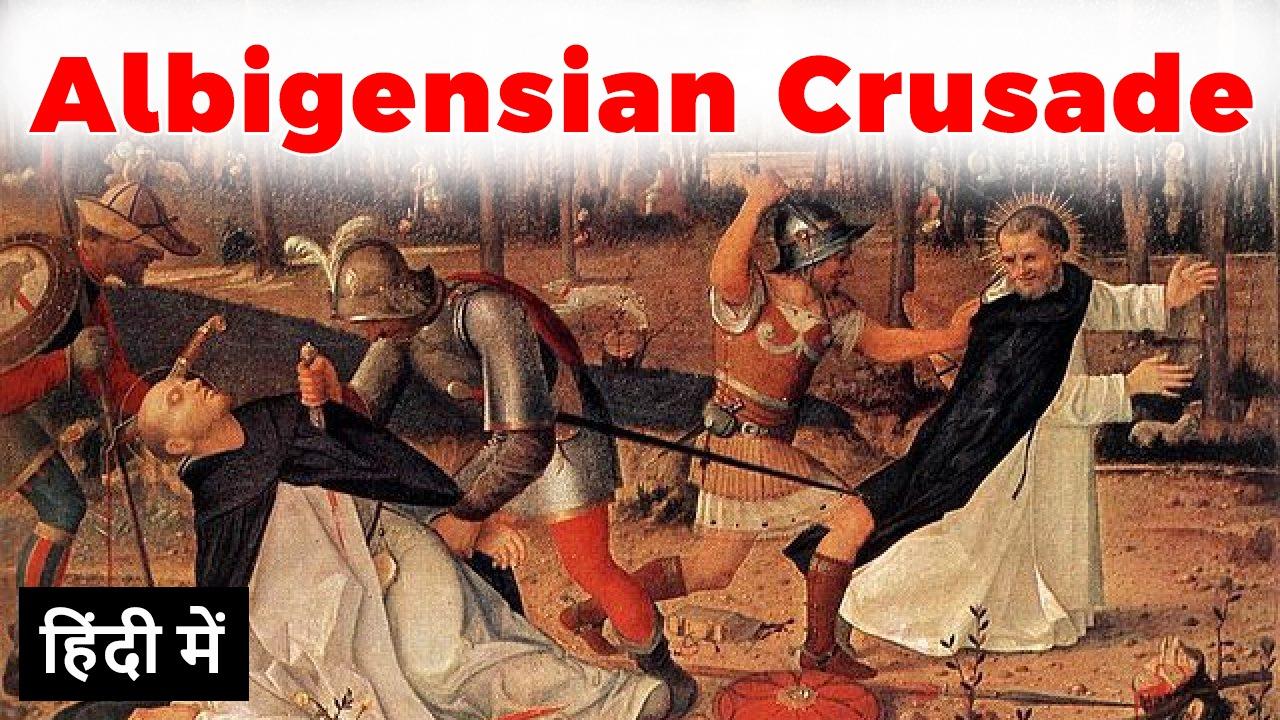Table of Contents
CRUSADES
- The Crusades were a series of religious wars initiated, supported and sometimes directed by the Latin Church in the medieval period, especially the campaigns between 1096 and 1271 in the Eastern Mediterranean aimed at recovering the Holy Land from Islamic rule.
- In 1095 Pope Urban II proclaimed the First Crusade at the Council of Clermont.A crusader presence remained in the region in some form until Acre, the last mainland outpost, fell in 1291, after which there were no further crusades to recover the Holy Land.
CATHARS
- Catharism was a Christian dualist or Gnostic revival movement that thrived in some areas of Southern Europe, particularly what is now northern Italy and southern France, between the 12th and 14th centuries.
- The followers were known as Cathars, or Good Christians, and are now mainly remembered for a prolonged period of persecution by the Catholic Church, which did not recognise their belief as being Christian.
- The adherents were sometimes known as Albigensians, after the city Albi in southern France where the movement first took hold.
- Cathars believed that the good God was the God of the New Testament, creator of the spiritual realm. Whereas the evil God was the God of the Old Testament, creator of the physical world whom many Cathars identified as Satan.
BACKGROUND
- The Cathars were part of a widespread spiritual reform movement in medieval Europe which began about 653 when ConstantineSilvanus brought a copy of the Gospels to Armenia.
- In the following centuries a number of dissenting groups arose, gathered around charismatic preachers, who rejected the authority of the Catholic Church.
- Henry of Lausanne criticized the priesthood and called for lay reform of the Church.He gained a large following.Henry’s preaching focused on condemning clerical corruption and clerical hierarcy He was arrested around 1146 and never heard from again.
- By the 12th century, organized groups of dissidents, such as the Waldensians and Cathars, were beginning to appear in the towns and cities of newly urbanized areas. In western Mediterranean France, one of the most urbanized areas of Europe at the time, the Cathars grew to represent a popular mass movement.
BACKGROUND
- The condemnation was repeated through the Third Lateran Council of 1179.In Languedoc, political control and land ownership was divided among many local lords and heirs.
- On assuming the papacy in 1198, Pope Innocent III resolved to deal with the Cathars and sent a delegation of friars to the province of Languedoc to assess the situation.
- By 1204, he offered to bless those willing to go on a military campaign against the Cathars with the same indulgence given to crusaders travelling to the Holy Land.
- Innocent III called for a crusade against the Albigensians, with the view that a Europe free of heresy could better defend its borders against invading Muslims. The time period of the Crusade coincided with the Fifth and Sixth Crusades in the Holy Land.
CAMPAIGNS
- By mid-1209, around 10,000 Crusaders had gathered in Lyon before marching south.[ Many Crusaders stayed on for no more than 40 days before being replaced. A large number came from Northern France,while some had volunteered from England.
- The Crusaders captured the small village of Servian and then headed for Béziers, arriving on July 21, 1209,they started to besiege the city. The entire population was slaughtered and the city burned to the ground.
- Amalric and Milo, a fellow legate, in a letter to the Pope, claimed that the Crusaders “put to the sword almost 20,000 people”.
CAMPAIGNS
- The Crusaders traversed the 45 miles between Béziers and Carcassonne in six days,arriving in the city on August 1, 1209. The siege did not last long. By August 7 they had cut the city’s water supply. The people were not killed but were forced to leave the town.
- The next battle centred around Lastours and the adjacent castle of Cabaret. Attacked in December 1209, Pierre Roger de Cabaret repulsed the assault.In March 1210, Bram was captured after a short siege. In June, the well-fortified city of Minerve was besieged
- In August, the Crusade proceeded to the stronghold of Termes.After taking Montferrand, the Crusaders headed for Toulouse.
- In 1215, Castelnaud was recaptured by Montfort, and the Crusaders entered Toulouse.The Fourth Council of the Lateran in 1215 solidified Crusader control over the area by officially proclaiming Simon the Count of Toulouse.
INQUISITION
- With the military phase of the campaign against the Cathars now primarily at an end, the Inquisition was established under Pope Gregory IX in 1234 to uproot heretical movements, including the remaining Cathars.
- Operating in the south at Toulouse, Albi, Carcassonne and other towns during the whole of the 13th century, and a great part of the 14th, it succeeded in crushing Catharism as a popular movement and driving its remaining adherents underground. Punishments for Cathars varied greatly.
- Most frequently, they were made to wear yellow crosses atop their garments as a sign of outward penance. Others made obligatory pilgrimages, which often included fighting against Muslims.
INQUISITION
- Visiting a local church naked once each month to be scourged was also a common punishment, including for returned pilgrims.
- Cathars who were slow to repent suffered imprisonment and, often, the loss of property. Others who altogether refused to repent were burned.
- The Dominicans would travel to towns and villages preaching in favor of the teachings of the Church and against heresy. In some cases, they took part in prosecuting Cathars.
- The Inquisition continued to search for and attempt to prosecute Cathars. The Inquisitors sometimes used torture as a method to find Cathars.
- Under Gui, a final push against Catharism began. By 1350, all known remnants of the movement had been extinguished.
World History Free PDF






















 WhatsApp
WhatsApp